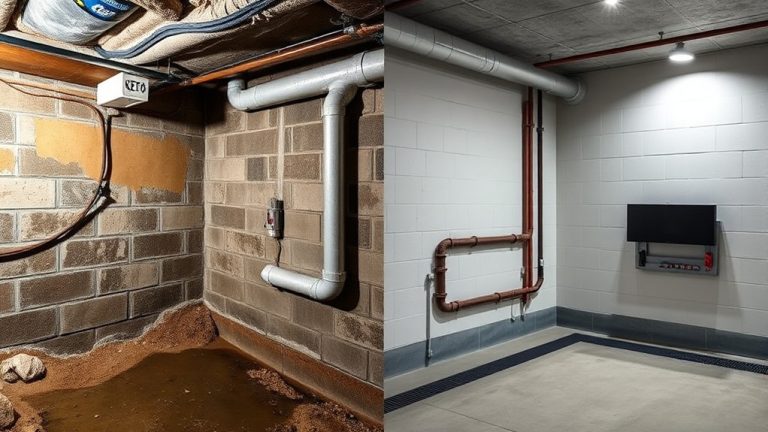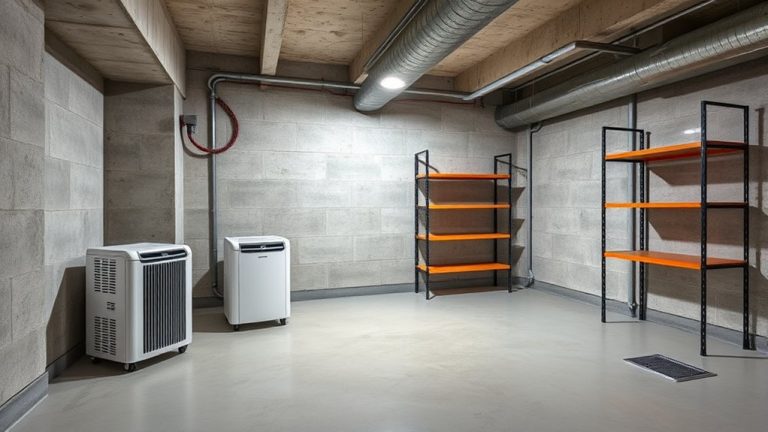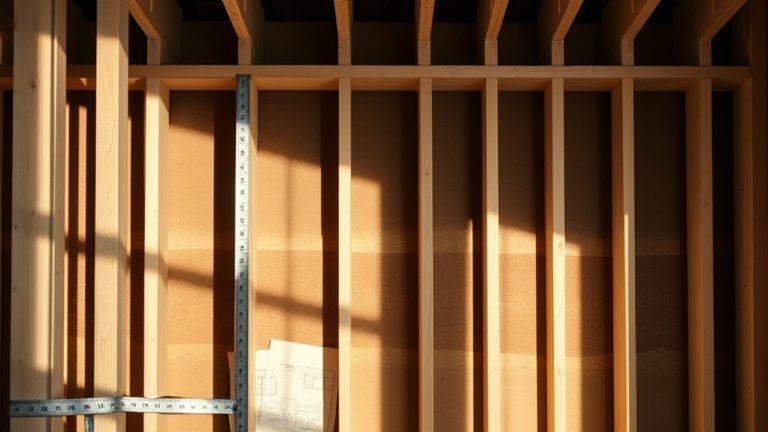Water can be a homeowner's worst nightmare, silently threatening your basement's safety and your property's foundation. If you've ever worried about potential flooding or water damage, you're not alone. Sump pumps are your first line of defense, standing guard against moisture intrusion and protecting what matters most. Want to understand how these critical systems work and why they're essential for your home's protection? Let's investigate the world of sump pumps and uncover how they can save you from costly water-related disasters.
Key Takeaways
- Sump pumps are specialized water removal systems designed to prevent basement flooding by rapidly extracting excess water from a designated collection basin.
- These devices utilize an impeller and motor mechanism to actively pump water out of the basement through a dedicated discharge pipe, protecting home foundations and structural integrity.
- Submersible and pedestal pump types offer different advantages, with submersible models providing more powerful water removal and quieter operation in underground sump pits.
- Regular maintenance, including seasonal inspections, testing float switches, and checking battery backup systems, ensures reliable performance during critical water management scenarios.
- Proper sump pump installation involves strategic placement at the basement's lowest point, consideration of local building codes, and professional assessment of specific water drainage needs.
The Basic Components of a Sump Pump
If you're dealing with basement water issues, understanding the basic components of a sump pump is essential for effective water management. You'll want to know about its indispensable parts, like the float switch components that detect water levels and trigger action.
The motor mechanism details are equally crucial, powering the pump's ability to move water away from your foundation. Your sump pump consists of a basin, a pump body, and an impeller that actively removes water. These components work together seamlessly, protecting your home from potential water damage and giving you peace of mind during heavy rainfall. Foundation repair services in Syracuse often recommend sump pump installation as a key strategy for preventing basement water damage and maintaining your home's structural integrity.
Types of Sump Pumps: Pedestal vs. Submersible
The two primary types of sump pumps—pedestal and submersible—each offer unique advantages for homeowners battling basement water challenges. Pedestal pumps sit above the sump pit, with their motor positioned higher, making maintenance easier and typically costing less. They're great for smaller pump size considerations. Sump pump installation services can provide professional guidance in selecting the right pump for your specific basement waterproofing needs.
Submersible pumps, however, reside underwater inside the pit, operating more quietly and handling larger water volumes effectively. When selecting discharge pipe options, both types connect similarly, but submersible models often provide more powerful performance. Your choice depends on your specific basement water management needs.
How Sump Pumps Protect Your Home
When water threatens to invade your basement, a sump pump becomes your first line of defense against potential flooding and water damage. By quickly removing excess water from your home's lowest level, these devices prevent costly structural issues and protect your precious belongings.
Preventing water damage isn't just about avoiding immediate destruction; it's about reducing flood risks that could compromise your home's foundation, electrical systems, and personal property. A well-maintained sump pump gives you peace of mind, ensuring your basement stays dry and your investment remains secure.
Installation and Placement Considerations
Because proper sump pump placement can make or break your basement waterproofing strategy, you'll want to carefully consider several vital factors during installation. Your soil type evaluation is essential, as different ground compositions affect water drainage and pump productivity.
Basement drainage considerations should include the lowest point in your basement, ensuring ideal water collection and quick removal. You'll need to check local building codes, measure available space, and consider potential obstacles. Professional installation can help you maneuver these challenges, preventing costly mistakes and ensuring your home stays dry and protected.
Maintenance Tips for Long-Term Performance
Proper sump pump installation sets the stage for ongoing performance, but regular maintenance will keep your basement dry and protect your investment.
You'll want to carry out seasonal inspections at least twice a year, checking for signs of wear or damage. Regular cleaning prevents debris buildup that can compromise pump efficiency. Test your pump by pouring water into the pit and ensuring it activates smoothly.
Listen for unusual noises, inspect the discharge line for blockages, and verify the backup battery's condition. Don't neglect these simple tasks – they'll save you from costly water damage and unexpected failures.
Signs You Need to Replace Your Sump Pump
If your sump pump starts showing signs of deterioration, it might be time to ponder a replacement before a catastrophic basement flood occurs. Unusual pump noises like grinding, rattling, or constant humming could signal internal mechanical problems.
Frequent pump cycling, where the unit turns on and off rapidly, might indicate motor strain or potential failure. Age is another critical factor—most pumps last 7-10 years, so if yours is older, consider proactive replacement. Don't wait until water damages your basement. Listening to your pump's performance can save you significant repair costs and prevent potential water damage.
Frequently Asked Questions
How Much Does a Typical Sump Pump Installation Cost?
You'll spend $500-$1,600 for sump pump installation, depending on primary pump capacity and backup power requirements. Costs vary with your home's specific waterproofing needs and complexity of setup.
Can a Sump Pump Work During a Power Outage?
You'll need a battery backup system with flood sensors to guarantee your sump pump operates during power outages, safeguarding your home from potential water damage when electricity fails.
Are Sump Pumps Effective in Preventing All Types of Flooding?
While effective, sump pumps can't prevent all flooding. They'll manage water table levels and underground water sources, but won't stop severe water intrusion if drainage systems fail or extreme rains overwhelm your pump's capacity.
Do Sump Pumps Increase or Decrease Home Resale Value?
You'll elevate your home's resale value with a sump pump, signaling enhanced property appeal to potential buyers who appreciate proactive water damage prevention and protection.
How Noisy Are Sump Pumps When They're Operating?
You'll notice moderate noise levels that can fluctuate depending on pump model and installation. Some pumps might interrupt sleep quality, so choose a submersible model with sound-dampening features for quieter operation.



